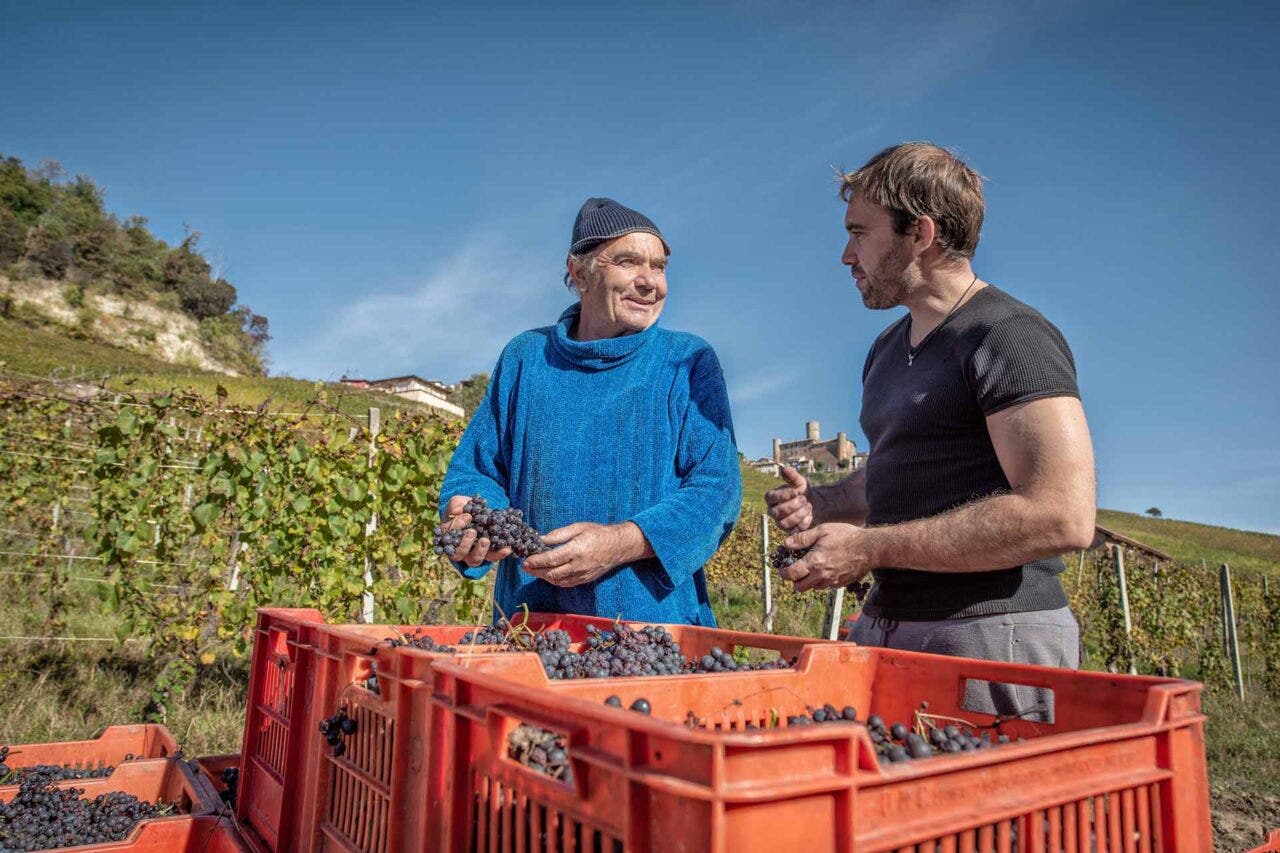In a world driven by instant gratification, the just released 2006 and 2016 Barolos from Roagna hail back to another era, to a time when makers of Piedmont’s classic reds conducted their craft with infinite patience and released their wines only when they deemed they were ready. So, while most producers today put their wines on the market as soon as the production regulations allow, Roagna’s Barolos and Barbarescos come out much later, in some cases even after 10 years or more depending on the wine and the vintage.
“I want to make wines that are drinkable upon release but that will also age for many years,” says Winemaker Luca Roagna, who now runs the family firm. The fifth generation of long-established Nebbiolo growers whose winemaking roots stretch back to 19th-century Barbaresco, Luca took over the reins in 2001 at just 20 years old.

Besides growing up in a winemaking family, he studied viticulture and oenology at Alba’s Oenological School and holds a degree in the same subjects from the University of Turin. He also learned the trade from his father, Alfredo, who still assists him, mainly in the vineyards but also in the cellars during critical moments. But as Luca explains, “From my first harvest, my father left me lots of freedom in terms of making decisions.”
Roagna’s classically crafted wines are made with grapes from estate holdings in top vineyard areas. Their premier sites include Asili, Pajè and Montefico in Barbaresco. In Barolo, Roagna is the sole owner of the Pira cru in Castiglione Falletto that the family purchased in 1989.
For Roagna, it all starts in the vineyards. The firm uses no herbicides, pesticides or fertilizers, not even organic fertilizer. If many producers talk the good talk about the importance of biodiversity, a walk through Roagna’s untamed vineyards proves that the father and son team are die-hard naturalists. The vineyards, home to old and very old vines, are teeming with plant life including grass, wild mint, wild peas and field flowers. Rather than mowing the grass, the Roagnas merely trample it down when needed.

Luca and Alfredo revere their old Nebbiolo vines, most of which are over 50 years old, though some are much older.
“Old vines can always find water, which is crucial during hot, dry years that are becoming more common due to climate change,” says Luca. Thanks to the advanced vine age, even in hot, dry vintages, Roagna still harvests in October or even late October to attain perfect ripening while preserving freshness as older vines maintain fresh tartaric acidity in the grapes.
For new plantings, Luca relies on vineyard-specific massal selection, meaning he uses clippings of the best performing vines in each individual vineyard to create new plants for the same parcel.

Luca’s non-interventionist approach carries over to the cellars. He ferments Nebbiolo for his single-vineyard Barbarescos and Barolos and Riservas in large conical wooden vats made of untoasted oak, without selected yeasts and with no temperature control. Roagna favors long maceration times—from 60 to 100 days—using the traditional submerged cap method, in which the mass of grape skins, known as the cap, is fully submerged in the cask by planks of wood, to gently extract color, fine tannins and polyphenols. The same casks are then used for lengthy aging, anywhere from three to 10 years depending on the vineyard, the wine and the vintage.
All of Roagna’s recent releases were extraordinary, but its Pira Barolos were mind-blowing. Protected from cold winds by the Rocche di Castiglione on the top, the historic vineyard has complex soils consisting of layers of alternating limestone, blue and gray marls, sand and minerals including iron, yielding wines with structure, finesse and longevity.

Roagna’s 2016 Pira Vecchie Viti is made with very old plants, the youngest of which were planted in 1937. It garnered 100 points because of its seamless combination of elegance, intensity and great depth of flavors that are the result of a fantastic vintage and a passionate producer who guides but never forces his wines. This is a terroir-driven wine loaded with energy, finesse and personality that will continue to evolve beautifully for decades.
Roagna 2006 Pira Riserva (Barolo); $900, 100 points. This compelling, fragrant red offers stunning aromas of woodland berry, new leather, pipe tobacco, pressed rose and the barest whiff of tar. The palate shows finesse and complexity, delivering juicy cranberry, red cherry, licorice and baking spice framed in tightly wound, elegant tannins. It’s still youthfully austere, with vibrant acidity that promises decades of aging potential. Drink 2026–2056. Cellar Selection.
Roagna 2016 Pira Vecchie Viti (Barolo); $380, 100 points. This beauty delivers enticing scents of woodland berry, rose petal, new leather and truffle that grow in intensity with time in the glass. The elegant palate features layers of raspberry compote, ripe Morello cherry, blood orange, licorice and baking spice. Taut, refined tannins and fresh acidity provide seamless support. Drink 2024–2046. Cellar Selection.
Roagna makes a small amount of Riservas exclusively in exceptional vintages and only from select parcels and the oldest plants. Released generally 10–15 years after the vintage year, their previous Pira Riserva was the 1996. The current rendition, the compelling Pira 2006 Riserva, embodies the passion of the winemaker, the ancient Nebbiolo vines, the unique vineyard area and the winemaker’s drive “to make a wine with an approach from the past that can age for many years,” according to Luca.
He has succeeded admirably. In my notes accompanying the perfect score, I wrote: “This compelling, fragrant red … shows finesse and complexity” and describe it as “still youthfully austere, with vibrant acidity that promises decades of aging potential.”
Proof that good things come to those who wait.
Last Updated: September 28, 2022















